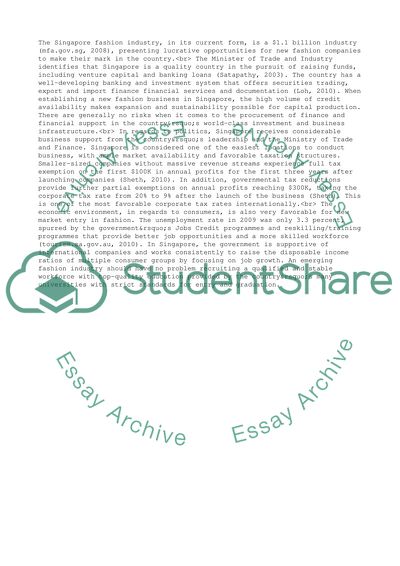Cite this document
(The Singapore Fashion Industry Research Paper Example | Topics and Well Written Essays - 2500 words, n.d.)
The Singapore Fashion Industry Research Paper Example | Topics and Well Written Essays - 2500 words. Retrieved from https://studentshare.org/business/1742638-international-economic-environment-of-business
The Singapore Fashion Industry Research Paper Example | Topics and Well Written Essays - 2500 words. Retrieved from https://studentshare.org/business/1742638-international-economic-environment-of-business
(The Singapore Fashion Industry Research Paper Example | Topics and Well Written Essays - 2500 Words)
The Singapore Fashion Industry Research Paper Example | Topics and Well Written Essays - 2500 Words. https://studentshare.org/business/1742638-international-economic-environment-of-business.
The Singapore Fashion Industry Research Paper Example | Topics and Well Written Essays - 2500 Words. https://studentshare.org/business/1742638-international-economic-environment-of-business.
“The Singapore Fashion Industry Research Paper Example | Topics and Well Written Essays - 2500 Words”, n.d. https://studentshare.org/business/1742638-international-economic-environment-of-business.


